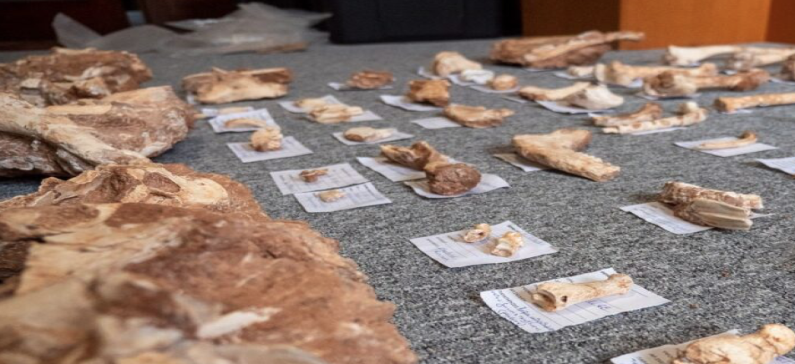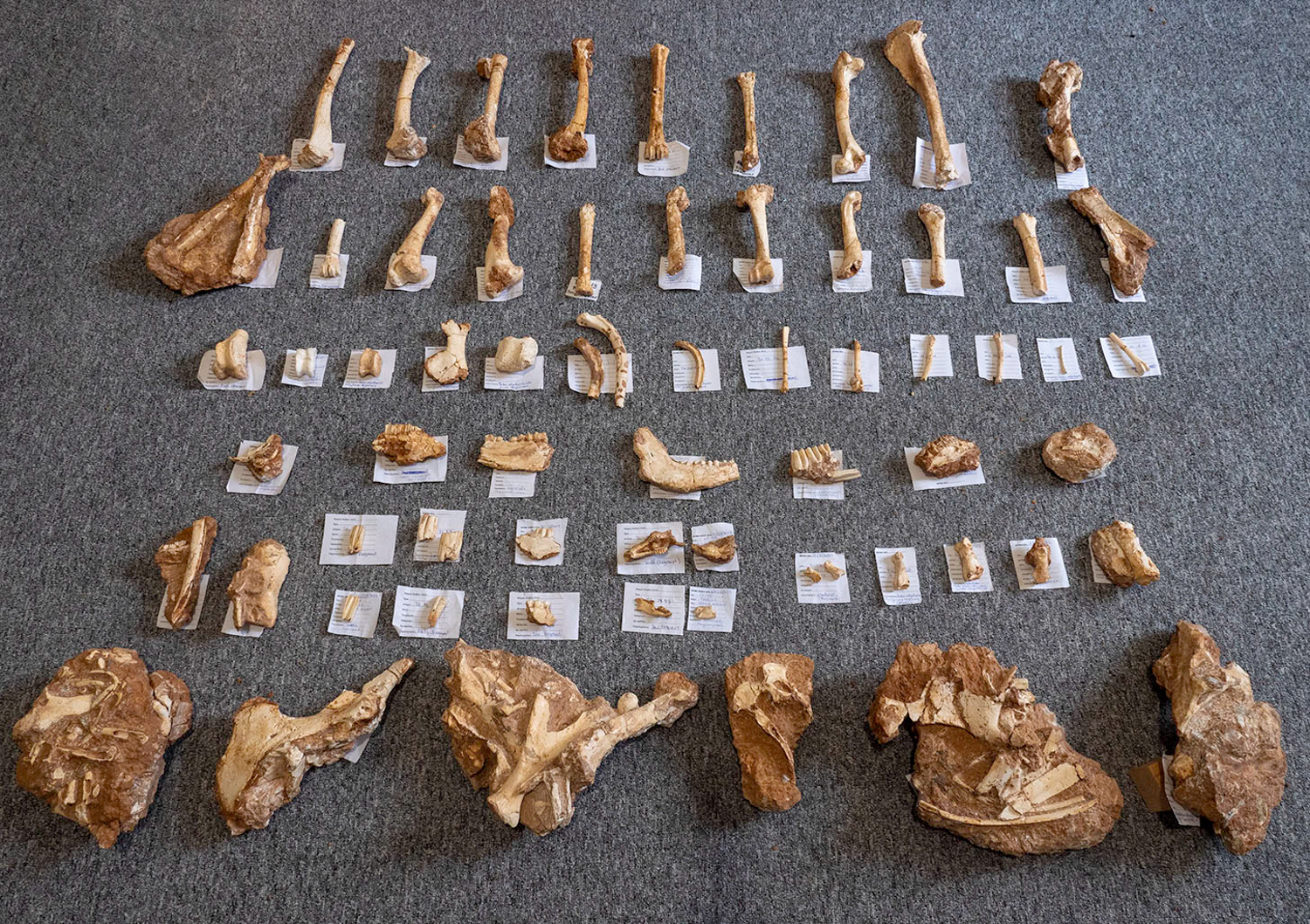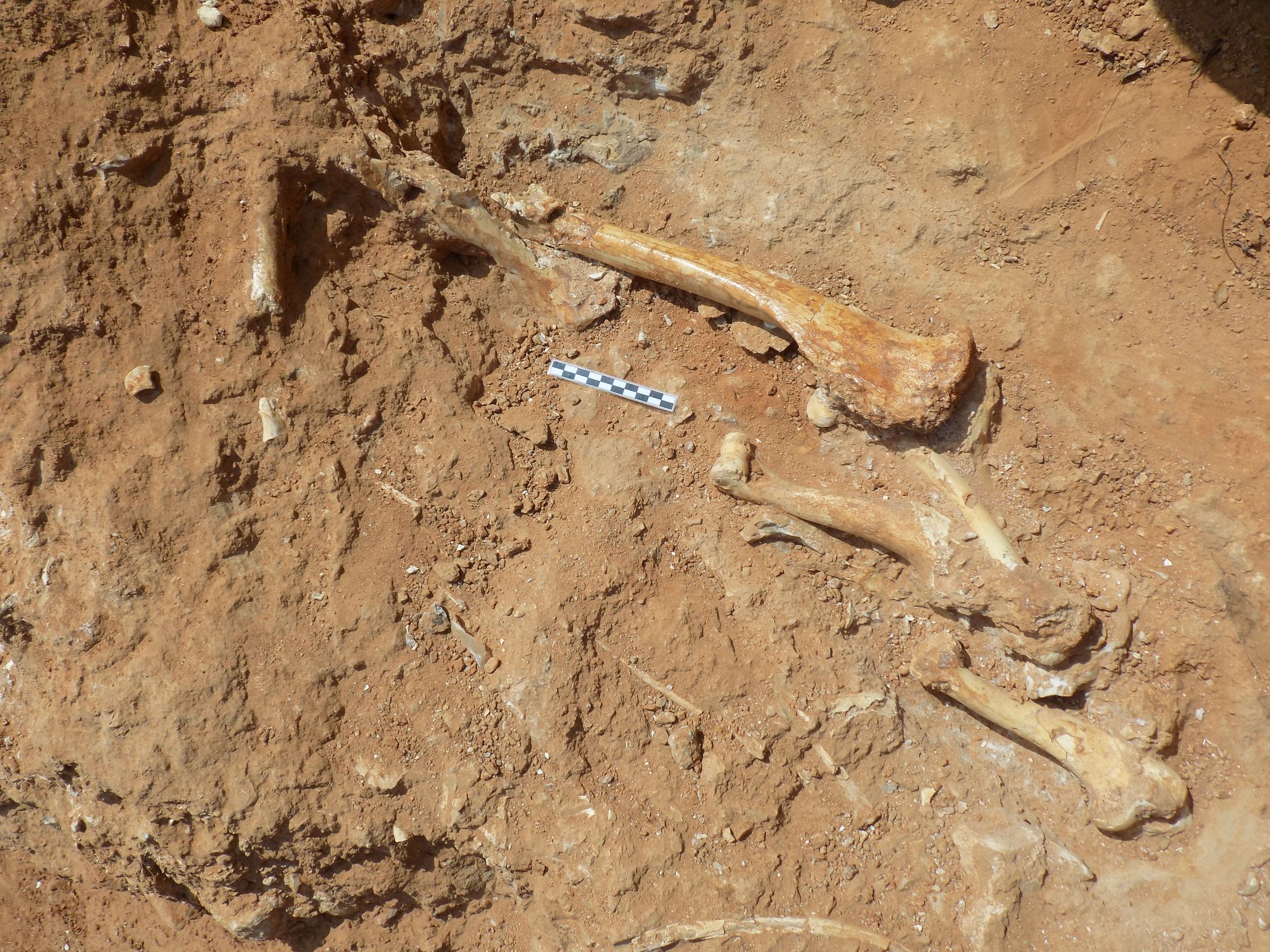
The Jurassic Park of Lesvos -They found bones of 2 million years old
Jurassic Park, was one of the most famous films in 90’s. Lesvos today and the wider area of Thermi, on the east side of the island, and not on the well-known western “fossil”, brings to light new findings two million years old and show a variety of fauna consisting of large mammals. such as horses, cattle, deer, antelopes and carnivores but also many micro-mammals, mainly lagomorphs. They are the fruit of a painstaking research effort and highlight a modern Jurassic Park.
The research started from the Museum of Natural History of the Petrified Forest of Lesvos in November 2019 and despite the limitations and problems created by the pandemic, it completed its first phase at the end of 2021. “The research revealed hundreds of vertebrate bones that lived in Lesvos the geological period of the lower Pleistocene, that is, about two million years ago “says to APE-MPE the director of the Museum of Natural History of the Petrified Forest of Lesvos, professor of the University of the Aegean Nikos Zouros. He continues: “The rich material of the paleontological excavations under study, testifies to the richness of the island’s fauna, reveals important facts about the fauna and ecosystems of the Eastern Aegean and the connection of the islands with the neighboring Asia Minor peninsula.”
So far, the excavation has recovered about 500 identifiable specimens and many more fossils of undetermined osteological character.
Start with a little antelope!
The research, Mr. Zouros continues, started when the first fossil was found, in sedimentary rocks. “It was a jaw fragment that has a small part of the denture and probably belongs to a small antelope. An exploratory investigation was then launched to determine if there were any other fossils. “Fragments of fossilized bones were found in the sediments and the existence was found, in the same area, of large tectonic cavities created in the limestone rocks which were then filled with fossilized sediments”.
The following year, an exploratory excavation was planned at the main fossil site. At the same time, the collection of sediments continued in order to sift and recover various micro-fossils through them. In addition, the presence of large blocks of osteological material was found, which had apparently been transported from higher points of the site due to the erosion of the rocks. Eventually, notes Mr. Zouros, the existence of a horizon with fossilized bones was revealed. “The first fossils found were skeletons of large ungulate mammals, mostly Artichokes (characterized by an even number of fingers on the hooves, usually two or four). The condition of the bones was not very good, as most of them were quite disintegrated, due to the increased humidity. The research was stopped due to the pandemic restrictions that did not allow work during the period October-November 2020 “.
From June 2021, the most essential phase of the systematic excavation started and the works focused on the central part of the horizon, where an increased accumulation of fossil bones was observed. “The dense concentration of bones in the sediment and their burial without a specific orientation, has often led to the redefinition of the excavation methodology in order to recover the fossils more safely. The dense concentration of the bones made the excavation very difficult, as the work had to proceed at a very slow pace in order not to cause damage. The particularly reduced mechanical strength of the fossils required their careful and precise development “.
For this reason, on-site maintenance of most of the osteological material was performed by the experienced conservationists of the Museum of Natural History of the Petrified Forest of Lesvos, which included, in principle, the work of fixing and welding, while in the most sensitive specimens before detaching from the space. In cases where the high concentration of bones acted as a deterrent to the individual extraction of fossils, fossil-bearing blocks were created, which were processed in the laboratories of the Museum. The rich material recovered during the excavation period consisted mainly of mammalian bones, most of them elongated bones, but without the presence of micro-mammalian skulls and jaws with a denture section made of Artichokes. Eventually, all the identifiable specimens were removed from the horizon and transferred to the laboratories of the Museum of Natural History of the Petrified Forest of Lesvos.
Responsible for the research
The research is conducted by the Museum of Natural History of the Petrified Forest of Lesvos, headed by its director Professor Nikos Zouros, in collaboration with the Lesbian researcher Dr. Paleontology of EKPA George Lyras. Michalis Georgitsis, a geologist and PhD candidate in Paleontology at EKPA, is responsible for the research excavations carried out in the wider area of Thermi. The research was also attended by the executives of the Museum George Gribilakos, Giannis Chorafas, Nikos Salabarchos, George Paslis and Giannis Karakostantis.














